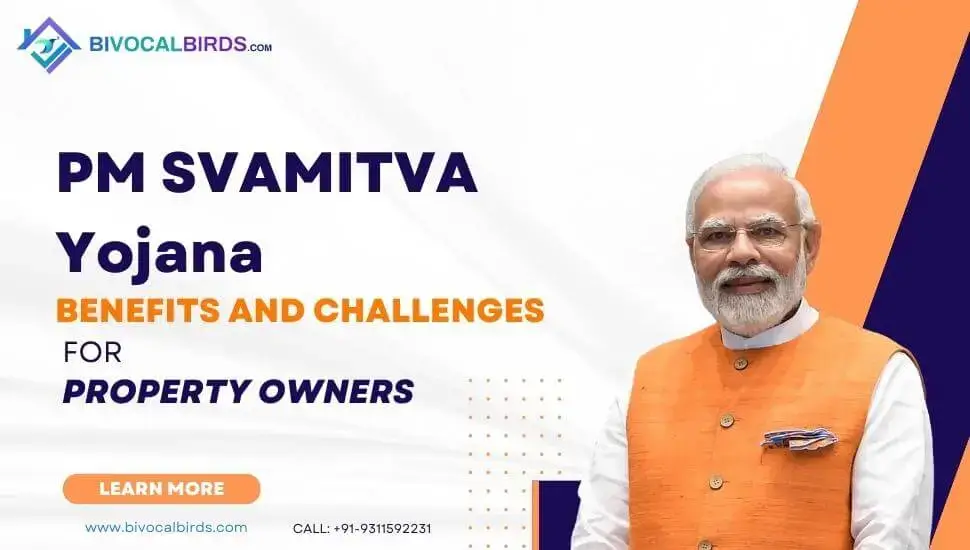PM SVAMITVA Yojana: Benefits and Challenges for Property Owners
 11-Nov-2023
11-Nov-2023The Prime Minister Street Vendor’s AtmaNirbhar Nidhi (PM SVANidhi) Scheme was launched by the Government of India on 24 April 2021 as a particular micro-credit facility to provide affordable loans to street vendors to resume their livelihoods impacted by COVID-19 lockdowns. Through this scheme, vendors can avail themselves of a working capital loan of up to Rs. 10,000 with interest subsidy and cashback incentives. While the scheme has benefited lakhs of vendors, it has some challenges, too. This blog analyses the key benefits and challenges of PM SVANidhi for street vendors.
Benefits of PM SVANidhi Scheme for Street Vendors
Access to Affordable Credit
The most significant benefit is it provides access to affordable credit, something street vendors have struggled with given their informal status. The scheme provides collateral-free loans at a subsidized 7% interest rate, lower than loans from informal sources that charge exorbitant rates. Vendors can utilize the affordable credit for working capital needs and to restart livelihoods.
Simple Eligibility and Application Process
Vendors only need a vending certificate to apply. There are no complex KYC requirements. Applications can be submitted through the scheme’s user-friendly mobile app and web portal. This makes enrollment easy even for vendors with limited literacy.
Interest Subsidy and Cash Back Incentives
Vendors receive a 7% interest subsidy if loans are repaid on time. They also get rewarded with cashback incentives up to Rs 1200 per annum upon timely repayment. This boosts returns and provides extra savings.
Promotes Digital Payments
To avail of scheme benefits, vendors must undertake 50% of transactions through digital modes like UPI, QR codes, etc. This promotes the adoption of cashless transactions in the unorganized sector.
Moratorium Period
The scheme provides a one-year moratorium period before repayment starts. This gives vendors time to stabilize their livelihoods after disbursal before EMI deductions begin.
Collateral Free Loans
The loans are collateral-free, without any asset mortgages. This makes it easy for asset-less vendors to avail of them.
Linkage to Social Security Schemes
Vendors availing loans can also opt for the PM Suraksha Bima Yojana, which provides access to subsidized accident insurance coverage. This boosts social security.
Rebooted Public Delivery System
A key aspect is the integration with city vending committees. These panels, with representation of officials and vendors, oversee scheme delivery. This reboots public service delivery.
Also Read - Everything you need to know about Noida master plan 2031
Challenges Faced by Vendors in Availing PM SVANidhi
Lack of Awareness
Many vendors, especially in rural and remote areas, are still unaware of the scheme and how to apply for it. More ground-level awareness campaigns are needed.
Access to Smartphones and Internet
Many vendors do not have smartphones or internet access, which is needed to access the portal and app. The process needs to be simplified for low-tech vendors.
Documentation Requirements
Though no KYC is required, many vendors still struggle to arrange documents like address proof and vendor certificates. The verification process can be further eased.
Restrictive Loan Caps
The Rs 10000 loan cap limits eligibility. Also, loans are capped to one per family, restricting households with multiple vendors. These caps need to be expanded.
Limited Bank Participation
Many banks, especially private ones, have low enthusiasm for extending PM SVANidhi loans. RBI needs to expand lending targets and incentives for banks.
Reluctance Towards Digital Payments
Most vendors are averse to digital transactions like UPI, cards and POS machines. They require extensive hand-holding for digital onboarding.
Repayment Risks
Despite the one-year moratorium, the impact of the pandemic has persisted beyond that for many vendors. More flexible repayment options are imperative.
Patchy Urban Coverage
In some cities, lax implementation by civic agencies has led to lower coverage and awareness. Better monitoring by state agencies is required.
Gaps in Grievance Redressal
Vendors have complained of delays in application processing and loan disbursal. The grievance redressal channels need to be more responsive.
Also Read - Benefits of Online Rent Agreement Registration for Landlords and Tenants in Noida Extension
Recommendations to Strengthen PM SVANidhi's Performance
Expand awareness campaigns through hyper-local media, vending associations and regional languages.
Set up dedicated help desks to assist vendors with applications, documentation and digital payments.
Onboard more lending partners beyond PSU banks like MFIs, NBFCs and fintech firms under the scheme.
Introduce differential interest rates based on prompt repayment records to incentivize good borrowers.
Increase upper caps for loan eligibility and relax one loan per family restriction.
Develop accessible repayment platforms like cash collection centres for vendors averse to digital transactions.
Provide better loan flexibility for COVID-19-impacted borrowers based on case-to-case assessment.
Rank cities based on scheme implementation and leverage competitive federalism.
Also Read -Navigating NaMo Bharat: A Comprehensive Guide to Delhi Meerut RRTS RapidX
In summary, the PM SVANidhi scheme has immense potential for unlocking affordable credit for marginalized street vendors. However, realizing its full transformational impact requires ironing out challenges in awareness, digital adoption, banking participation and execution efficiency. Addressing these gaps can enable enhanced financial inclusion and livelihood support for street vendors.
For further information, You Can Call us or Email us at support@bivocalbirds.com.
Related Blogs :
- Single-Family Property Management Service Trends for 2023
- How technology has simplified the way investors access properties?
Best Location To Live In:



